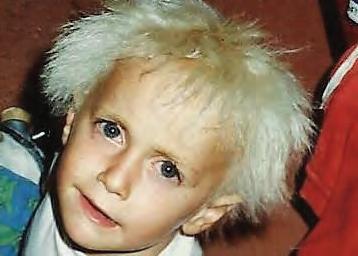
8 minute read
AGES AND STAGES
by Mocco Wollert
“LIAR, liar, pants on fire!” I can’t quite get the meaning of this little ditty but if it should be true, there would be an awful lot of people roaming this earth with scorched bottoms.
Have you ever told a lie? If your answer is NO, I know that you are lying. We all lie at some stage in our lives.
There are many types of lies: white lies, habitual lies, blatant lies, outright dangerous lies, and sometimes necessary lies. Probably pathological liars are the worst; they are compelled, by whatever force, to always lie.
Most of them have a very good memory system that prevents them from being found out. In a way I feel sorry for them because the saying goes: once you told a lie, nobody will believe you again.
Everyone who has children knows that there is an extra child in the family. Its name is “Not Me”. Who left the fridge door open? Not Me. Who ate the last biscuit? Not Me. Who let the cat out? Not Me. The list is endless and it is always the same child – Not Me.
Why do children lie? Are they learning to protect themselves against consequences? Is it a subconscious reflex to avoid being held responsible and therefore punished? From the time that children actually know right from wrong, they lie.
Why wouldn’t they, if telling a little lie saves them from getting a smack – I am talking of course, strictly in the past here, as it is no longer allowed to smack.
My generation administered the odd smack on the leg to keep children in line. Some psychologists even say it gave the child a sense of security, a boundary, something strong to buck against but at the same time a feeling of protection by somebody strong.
Animals also can pretend that they were not guilty of a misdemeanour.
It wasn’t their fault that the vase broke or the sock got chewed up, but their usually very guilty looks give them away. They cannot say “I am sorry” when you scold them, only slink into a corner and look pitiful. It tears your heart out and you forgive them instantly.
Little white lies are sometimes necessary, say to help someone’s selfesteem. You may say to a friend, who has just bought a new outfit and can certainly not afford another one, “you look lovely in that” when in reality maroon is absolutely not her colour.
What about when he himself has cooked the dinner? “Lovely, darling (did he have to put that much tabasco in it?) I so appreciate you cooking tonight.” His beaming face outweighs the little white lie. In social settings, white lies are just about a must. Whatever the host or hostess has provided must be praised (at least to their faces) whether the wine is sour or the canapés are soggy.
There are people who tell what I call “big fat lies”. Fishermen who brag about the big snapper they caught when in reality it was a small, underweight fish they had to throw back. Golf also seems to lend itself to telling lies, making just “a little mistake” when marking less numbers of strokes on the card.
A blatant lie though is, in my eyes, unforgivable. This person obviously has no conscience and does not care whether he or she is hurting someone, sometimes seriously. I can only hope that St Peter slams the door on them when they turn up at the pearly gates.
Could there be a merciful lie? I know I am sticking my head out with this one: is it a good thing to tell a person that he or she will not get better? Would it be kinder, and encourage them, to let them think that things might improve? If given hope, they might actually rally.
I have a great problem with lying. I have the sort of face that always gives me away when not telling the truth.
Also, my memory is not good and liars have to have a phenomenal memory not to contradict themselves.
May you always tell the truth or stick to little white lies.
by Cheryl Lockwood
DISCOVERING your child has a syndrome can be a shock. Every parent wants good health and happiness for their offspring.
My son turned 30 last year and I have only just discovered a name for the affliction he suffered as a child. Don’t worry, his Uncombable Hair Syndrome was not life-threatening.
This is an actual condition. I’m not talking about a bad hair day or knotted bed-hair after a restless night’s sleep. His was more like a cartoon character with its finger in an electrical outlet.
After coming across an online article about a child in the US with this condition, I did a little research. The main symptom is dry, frizzy hair that will not behave itself, meaning it cannot be combed flat.
It is light coloured and often has a glistening sheen. The untamed locks usually appear between infancy and three years and have also been called “spun glass hair”. The individual hairs don’t grow downward from the scalp but head off in multiple directions.
Our genes are responsible for the traits we end up with. Or as I see it, the annoying parts that we blame on our parents.
Uncombable Hair Syndrome involves







Isn’t it time to rejoin life
Hearing Loss is More Noticeable Than Hearing Aids
Our expert and experienced team can help you fi nd a hearing solution specifi c to YOUR lifestyle, budget and hearing needs.
BOOK YOUR APPOINTMENT TODAY
• Adult hearing tests • Children’s hearing tests from prep up eari ing t te t sts • Child dren’ ’s hea i ring test ts fromp • Hearing Aids of ALL brands & repairs • Ear suction & ear care • TV Devices / Headsets • Swim plugs/ Musicians Plugs • Tinnitus Advise • Latest technology & life long after care
FAMILY BUSINESS FAMILY VALUES Before committing to any purchase of hearing aids come and see us and compare.
Phone 1300 415 718 Ph 1300415718
www.totalhearingandhealth.com.au









mutated genes inherited from one or both parents. We don’t know who to point the finger at because the parents don’t usually show signs of the condition.
I’m no scientist, but simply put, when these mutated genes are the ones involved in the formation of hair, the shape of the hair shaft is altered causing it to stand out. The hairs reflect the light differently too, which causes the sparkly sheen.
Quite often, the condition rights itself by adolescence and this was the case with my son, who progressed to a wavy mop, bordering on dreadlocks. The shine diminished too, but mostly due to a grotty, teen phase.
My bonny boy was born with an average head of dark, baby hair. About six months later, I noticed fine, light-coloured fuzz covering his noggin. No great shock as blond hair featured on both sides of the family.
As the months went on, the fuzz grew into an uncontrollable mass that had to be seen to be believed. The hair looked like duck down and wafted in the breeze like a field of wheat. By the age of two, it was white.
To say he turned heads is an understatement. Strangers stared and pointed. Hands reached out to feel his soft, fluffy locks like metal to a magnet.
One day, some Japanese tourists requested a photo and a lady even accused me of bleaching it (I didn’t!). To me, he was just my much-loved son and if that was the hair he came with, then so be it. I soon gave up trying to brush, comb or trim it into shape.
Eventually, he started school where other kids thought it was the coolest thing they’d seen and he soon became cool by association. To this day, people ask me, “what’s his hair like now?”
It remained unruly until he joined the army and wore the obligatory buzz cut. These days it is tidy and respectable with a few waves, though he tells me it still goes a bit fluffy when freshly washed.
Imagine my surprise when I saw pictures of an American child gathering attention on social media with the same crazy hairdo my son sported all those years ago. I excitedly shared my discovery with the family. My son’s comment? “If Instagram was around back then, Mum we could have made some money!” Visit lockwoodfreelance.com


Your say, your rights in aged care
Advocacy support for older Queenslanders is important now more than ever. ADA Australia has been giving older rights for over 30 years. We support older people to access aged care services and resolve care related issues, through free, independent and Advocacy services are here for everyone. Call us on 1800 700 600.











